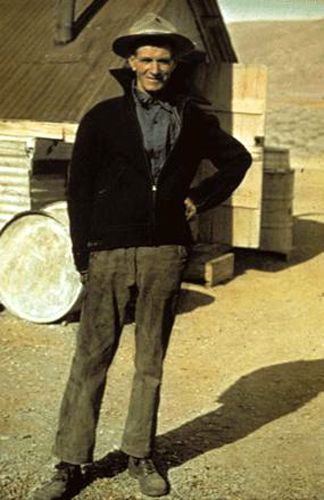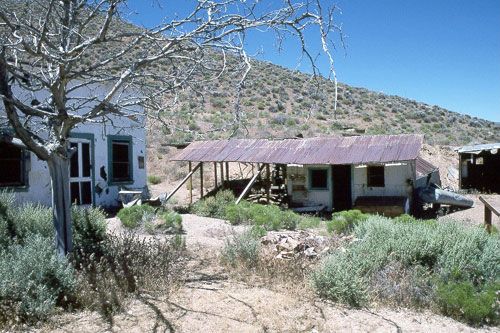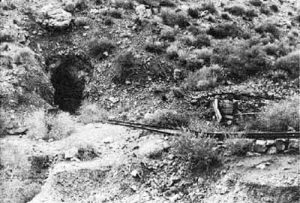
Pete Aguereberry
Born in the Basque Region of France on October 18, 1874, Jean Pierre “Pete” Aguereberry was a renowned Death Valley prospector who mined gold for more than 40 years. He read about the wonderful gold discoveries in California and begged his father to let him come to the United States at an early age. When he turned 16, his father relented, and Pete sailed for America in 1890.
For the next several years, he struggled to learn the language while taking on several jobs. He worked as a handball player, sheepherder, cattle driver, milk truck driver, ice delivery man, ranch hand, and stage driver until he wound up in Goldfield, Nevada, around 1902.
He then headed to Death Valley in June of 1905 and almost died trying to cross the desert in the summer heat. He was found and nursed back to health by Oscar Denton, the caretaker for the Furnace Creek Ranch, and just a month later was headed up to Ballarat, California, with Shorty Harris.
Along their journey, Pete found a ledge that looked promising in what is now known as Harrisburg Flats on July 1. Working the ledge for just a short time, the two soon found free gold. Pete filed claims on the north side of the hill while Shorty took claims on the south side.
By August 1905, some 20 parties were working in the area, and samples of the gold were assayed as high as $500 a ton. Before long, the camp of Harrisburg was born, named for Shorty Harris. At first, the pair called the camp Harrisberry, but Shorty later changed the name to tell the story.
By 1906, 300 people were settled in the camp, and Aguereberry had transformed his claim into the Eureka Mine. Unfortunately, the Eureka Mine became tangled up in litigation beginning in 1907, but Pete got control of the claims in 1909.
He would work the mine until his death entirely by himself, but for some help from a nephew in his later years. Though he worked his claim for 40 years, he never got rich from it. In fact, he often was required to grubstake prospectors and take odd jobs from others to survive. He is perhaps best known for a road that he built to the point that he called “The Great View” of Death Valley, where he would often take visitors. The view is now called Aguereberry Point in honor of Pete.
Pete died on November 23, 1945, at Tecopa Hot Springs at age 72. Though he wished to be buried at the point, government officials, citing the 1933 monument status of Death Valley, denied his final request. Instead, Father Frank Crowley interred Pete at the Mount Whitney Cemetery in Lone Pine, California. A plaque honors his life and memory as a modest, hardworking, and honorable man.
His camp continues to survive today, including his original two-room cabin built in 1907. Another cabin also stands here, which was built in 1941 as a guest house. A third cabin, built around 1946, also stands, but its original use is unknown. Remains of the Eureka Mine can also be seen.
His Eureka mining operation at Harrisburg is still easily accessible today, on the dirt Aguereberry Point Road, a relatively easy drive for nearly any vehicle. The road also goes past Pete’s old camp.

Aguereberry’s Camp, courtesy Death Valley Off-Road Trails
© Kathy Weiser-Alexander/Legends of America, updated November 2021.
Also See:

